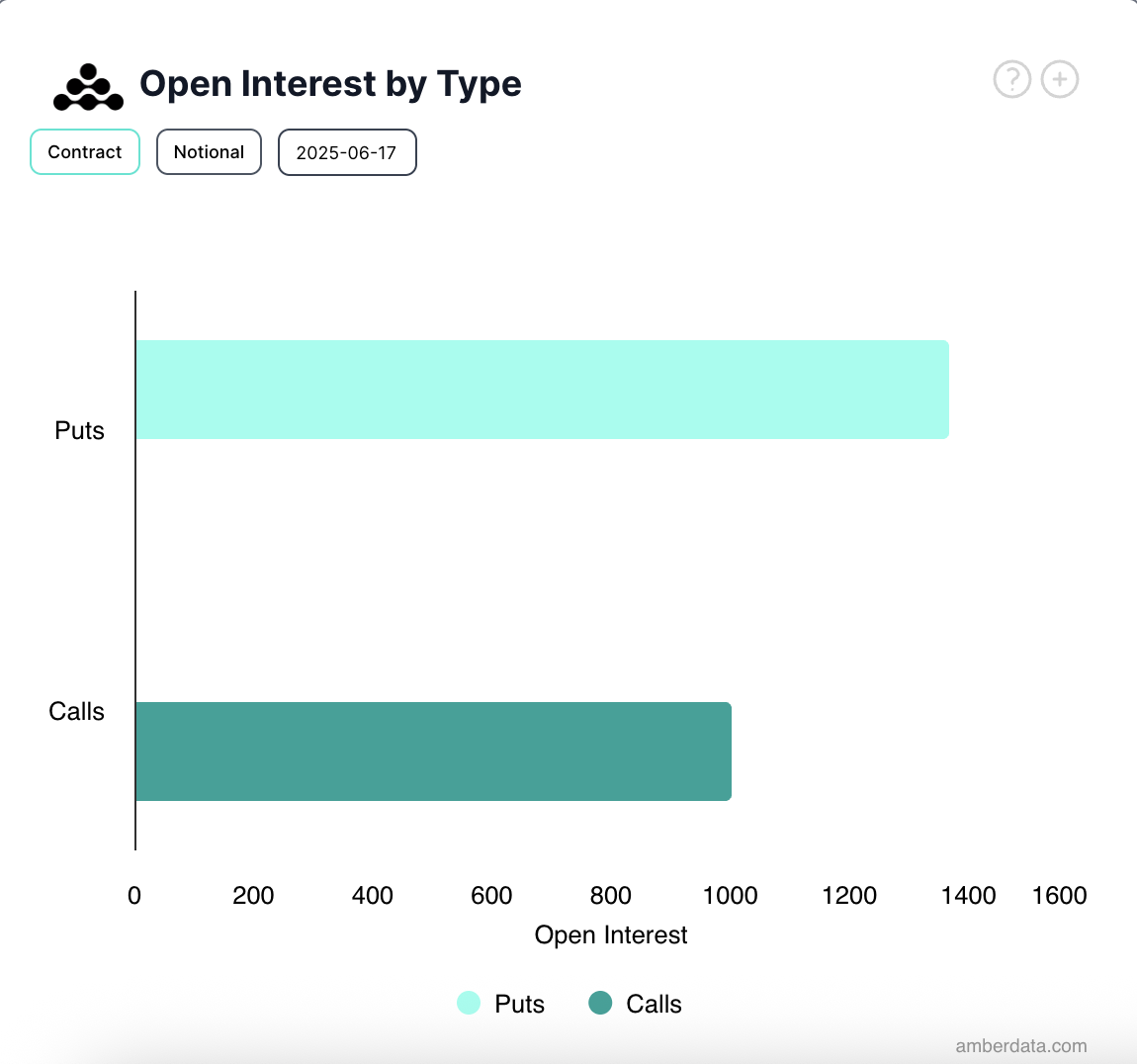| COINOTAG recommends • Exchange signup |
| 💹 Trade with pro tools |
| Fast execution, robust charts, clean risk controls. |
| 👉 Open account → |
| COINOTAG recommends • Exchange signup |
| 🚀 Smooth orders, clear control |
| Advanced order types and market depth in one view. |
| 👉 Create account → |
| COINOTAG recommends • Exchange signup |
| 📈 Clarity in volatile markets |
| Plan entries & exits, manage positions with discipline. |
| 👉 Sign up → |
| COINOTAG recommends • Exchange signup |
| ⚡ Speed, depth, reliability |
| Execute confidently when timing matters. |
| 👉 Open account → |
| COINOTAG recommends • Exchange signup |
| 🧭 A focused workflow for traders |
| Alerts, watchlists, and a repeatable process. |
| 👉 Get started → |
| COINOTAG recommends • Exchange signup |
| ✅ Data‑driven decisions |
| Focus on process—not noise. |
| 👉 Sign up → |
-
Bitcoin’s recent surge to nearly $110,000 has ignited a significant influx of capital into BTC-backed ETFs, underscoring renewed institutional confidence in the leading cryptocurrency.
-
BlackRock’s iShares Bitcoin Trust (IBIT) dominated the inflows, attracting $267 million and pushing its total assets under management above $50 billion.
-
Despite the price uptick, market indicators such as negative funding rates and rising put option demand reveal cautious sentiment among traders, signaling potential short-term volatility.
Bitcoin’s rally to $109,952 sparks $408M inflows into BTC ETFs, led by BlackRock’s IBIT, amid mixed market signals from funding rates and options activity.
Institutional Demand Drives Bitcoin ETF Inflows Amid Price Rally
Bitcoin’s climb to an intraday peak of $109,952 on Monday marked a pivotal moment, catalyzing a surge in capital flows into US-listed spot Bitcoin ETFs. The combined net inflows of $408.59 million represent the largest single-day injection since early June, highlighting robust institutional appetite for direct BTC exposure through regulated financial products.
Leading the inflows, BlackRock’s iShares Bitcoin Trust (IBIT) recorded $267 million in new investments, elevating its total net inflows to an impressive $50.03 billion. This milestone underscores IBIT’s position as a preferred vehicle for institutional investors seeking portfolio diversification and inflation hedging via cryptocurrency.
The inflow data suggests that despite recent price fluctuations, institutional investors maintain a strategic conviction in Bitcoin’s long-term value proposition, leveraging ETFs as a regulated and accessible entry point.
| COINOTAG recommends • Professional traders group |
| 💎 Join a professional trading community |
| Work with senior traders, research‑backed setups, and risk‑first frameworks. |
| 👉 Join the group → |
| COINOTAG recommends • Professional traders group |
| 📊 Transparent performance, real process |
| Spot strategies with documented months of triple‑digit runs during strong trends; futures plans use defined R:R and sizing. |
| 👉 Get access → |
| COINOTAG recommends • Professional traders group |
| 🧭 Research → Plan → Execute |
| Daily levels, watchlists, and post‑trade reviews to build consistency. |
| 👉 Join now → |
| COINOTAG recommends • Professional traders group |
| 🛡️ Risk comes first |
| Sizing methods, invalidation rules, and R‑multiples baked into every plan. |
| 👉 Start today → |
| COINOTAG recommends • Professional traders group |
| 🧠 Learn the “why” behind each trade |
| Live breakdowns, playbooks, and framework‑first education. |
| 👉 Join the group → |
| COINOTAG recommends • Professional traders group |
| 🚀 Insider • APEX • INNER CIRCLE |
| Choose the depth you need—tools, coaching, and member rooms. |
| 👉 Explore tiers → |
Market Sentiment Revealed by Derivatives Activity and Funding Rates
While the spot market reflects a modest 1% gain for Bitcoin, derivatives markets paint a more nuanced picture. Funding rates for perpetual futures contracts have turned negative, currently hovering around -0.0007%, indicating that short sellers are paying longs. This dynamic typically signals a prevailing bearish sentiment among leveraged traders, who may be anticipating downward price pressure.
Negative funding rates can amplify selling momentum if sustained, as traders adjust positions to hedge against potential declines. This is a critical metric for market participants to monitor, as it often precedes increased volatility.
| COINOTAG recommends • Exchange signup |
| 📈 Clear interface, precise orders |
| Sharp entries & exits with actionable alerts. |
| 👉 Create free account → |
| COINOTAG recommends • Exchange signup |
| 🧠 Smarter tools. Better decisions. |
| Depth analytics and risk features in one view. |
| 👉 Sign up → |
| COINOTAG recommends • Exchange signup |
| 🎯 Take control of entries & exits |
| Set alerts, define stops, execute consistently. |
| 👉 Open account → |
| COINOTAG recommends • Exchange signup |
| 🛠️ From idea to execution |
| Turn setups into plans with practical order types. |
| 👉 Join now → |
| COINOTAG recommends • Exchange signup |
| 📋 Trade your plan |
| Watchlists and routing that support focus. |
| 👉 Get started → |
| COINOTAG recommends • Exchange signup |
| 📊 Precision without the noise |
| Data‑first workflows for active traders. |
| 👉 Sign up → |
Complementing this, options market data from Deribit reveals a surge in put option open interest relative to calls. This shift suggests that investors are actively seeking downside protection, reflecting heightened caution despite the positive ETF inflows.

| COINOTAG recommends • Traders club |
| ⚡ Futures with discipline |
| Defined R:R, pre‑set invalidation, execution checklists. |
| 👉 Join the club → |
| COINOTAG recommends • Traders club |
| 🎯 Spot strategies that compound |
| Momentum & accumulation frameworks managed with clear risk. |
| 👉 Get access → |
| COINOTAG recommends • Traders club |
| 🏛️ APEX tier for serious traders |
| Deep dives, analyst Q&A, and accountability sprints. |
| 👉 Explore APEX → |
| COINOTAG recommends • Traders club |
| 📈 Real‑time market structure |
| Key levels, liquidity zones, and actionable context. |
| 👉 Join now → |
| COINOTAG recommends • Traders club |
| 🔔 Smart alerts, not noise |
| Context‑rich notifications tied to plans and risk—never hype. |
| 👉 Get access → |
| COINOTAG recommends • Traders club |
| 🤝 Peer review & coaching |
| Hands‑on feedback that sharpens execution and risk control. |
| 👉 Join the club → |
Total Bitcoin Spot ETF Net Inflow. Source: SosoValue

BTC Funding Rate. Source: Coinglass

| COINOTAG recommends • Exchange signup |
| 📈 Clear control for futures |
| Sizing, stops, and scenario planning tools. |
| 👉 Open futures account → |
| COINOTAG recommends • Exchange signup |
| 🧩 Structure your futures trades |
| Define entries & exits with advanced orders. |
| 👉 Sign up → |
| COINOTAG recommends • Exchange signup |
| 🛡️ Control volatility |
| Automate alerts and manage positions with discipline. |
| 👉 Get started → |
| COINOTAG recommends • Exchange signup |
| ⚙️ Execution you can rely on |
| Fast routing and meaningful depth insights. |
| 👉 Create account → |
| COINOTAG recommends • Exchange signup |
| 📒 Plan. Execute. Review. |
| Frameworks for consistent decision‑making. |
| 👉 Join now → |
| COINOTAG recommends • Exchange signup |
| 🧩 Choose clarity over complexity |
| Actionable, pro‑grade tools—no fluff. |
| 👉 Open account → |
BTC Options Open Interest. Source: Deribit
Balancing Optimism with Caution: What This Means for Bitcoin Investors
The juxtaposition of strong ETF inflows against cautious derivatives positioning illustrates a market at a crossroads. Institutional investors appear confident in Bitcoin’s medium to long-term outlook, as evidenced by substantial capital allocations to ETFs. However, the derivatives market’s defensive posture indicates awareness of potential near-term headwinds.
| COINOTAG recommends • Members‑only research |
| 📌 Curated setups, clearly explained |
| Entry, invalidation, targets, and R:R defined before execution. |
| 👉 Get access → |
| COINOTAG recommends • Members‑only research |
| 🧠 Data‑led decision making |
| Technical + flow + context synthesized into actionable plans. |
| 👉 Join now → |
| COINOTAG recommends • Members‑only research |
| 🧱 Consistency over hype |
| Repeatable rules, realistic expectations, and a calmer mindset. |
| 👉 Get access → |
| COINOTAG recommends • Members‑only research |
| 🕒 Patience is an edge |
| Wait for confirmation and manage risk with checklists. |
| 👉 Join now → |
| COINOTAG recommends • Members‑only research |
| 💼 Professional mentorship |
| Guidance from seasoned traders and structured feedback loops. |
| 👉 Get access → |
| COINOTAG recommends • Members‑only research |
| 🧮 Track • Review • Improve |
| Documented PnL tracking and post‑mortems to accelerate learning. |
| 👉 Join now → |
For investors, this environment calls for a balanced approach—recognizing the strategic value of Bitcoin as a portfolio asset while remaining vigilant to signals of increased volatility. Active monitoring of funding rates and options activity can provide early warnings of market shifts, enabling timely risk management.
As Bitcoin continues to navigate these dynamics, market participants should consider diversified strategies that incorporate both spot holdings and derivatives hedging to optimize exposure and mitigate downside risks.
| COINOTAG recommends • Exchange signup |
| 🎯 Focus on process over noise |
| Plan trades, size positions, execute consistently. |
| 👉 Sign up → |
| COINOTAG recommends • Exchange signup |
| 🛠️ Simplify execution |
| Keep decisions clear with practical controls. |
| 👉 Get started → |
| COINOTAG recommends • Exchange signup |
| 📊 Make data your edge |
| Use depth and alerts to avoid guesswork. |
| 👉 Open account → |
| COINOTAG recommends • Exchange signup |
| 🧭 Be prepared, not reactive |
| Turn setups into rules before you trade. |
| 👉 Create account → |
| COINOTAG recommends • Exchange signup |
| ✍️ Plan first, then act |
| Entries, exits, and reviews that fit your routine. |
| 👉 Join now → |
| COINOTAG recommends • Exchange signup |
| 🧩 Consistency beats intensity |
| Small, repeatable steps win the long run. |
| 👉 Sign up → |
Conclusion
Bitcoin’s recent price surge has reignited institutional interest, driving record inflows into BTC-backed ETFs, particularly BlackRock’s IBIT. Yet, the derivatives market reveals a more cautious sentiment, with negative funding rates and rising put option demand signaling potential short-term volatility. Investors should weigh these contrasting signals carefully, adopting strategies that balance growth opportunities with prudent risk management in an evolving crypto landscape.
| COINOTAG recommends • Members‑only research |
| 📌 Curated setups, clearly explained |
| Entry, invalidation, targets, and R:R defined before execution. |
| 👉 Get access → |
| COINOTAG recommends • Members‑only research |
| 🧠 Data‑led decision making |
| Technical + flow + context synthesized into actionable plans. |
| 👉 Join now → |
| COINOTAG recommends • Members‑only research |
| 🧱 Consistency over hype |
| Repeatable rules, realistic expectations, and a calmer mindset. |
| 👉 Get access → |
| COINOTAG recommends • Members‑only research |
| 🕒 Patience is an edge |
| Wait for confirmation and manage risk with checklists. |
| 👉 Join now → |
| COINOTAG recommends • Members‑only research |
| 💼 Professional mentorship |
| Guidance from seasoned traders and structured feedback loops. |
| 👉 Get access → |
| COINOTAG recommends • Members‑only research |
| 🧮 Track • Review • Improve |
| Documented PnL tracking and post‑mortems to accelerate learning. |
| 👉 Join now → |










